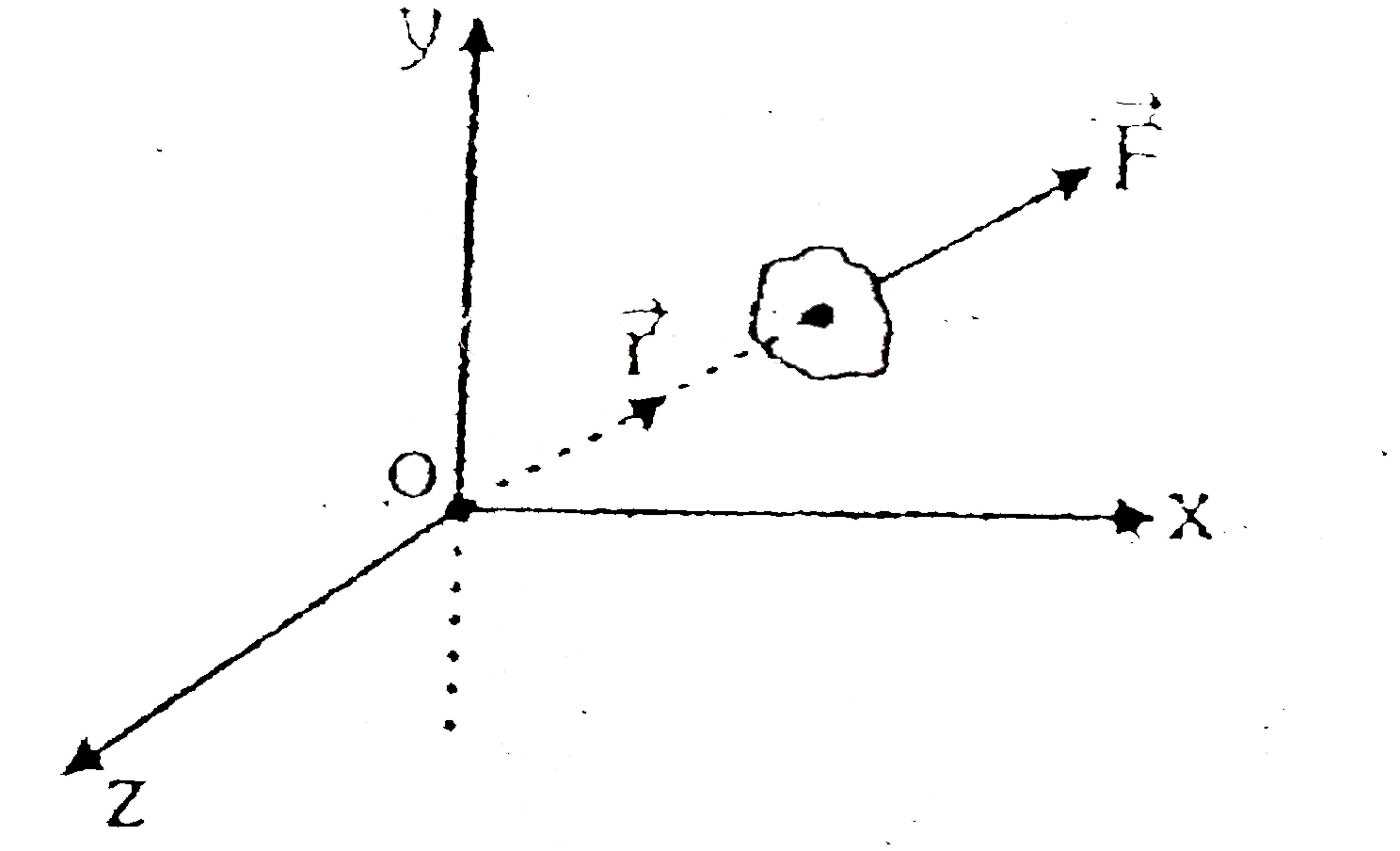A body is free to rotate about an axis parallel to y−axis. A force of →F=(3ˆi+2ˆj+6ˆk)N is acting on the body the position vector of whose point of applications is →r=(2ˆi−3ˆj)m. The moment of inertia of body about y−axis is 10kgm2. The angular acceleration of body is :−

(−1.8ˆi−1.2ˆj+1.3ˆk)rad/s2
−1.8ˆirad/s2
−1.2ˆjrad/s2
−1.3ˆkrad/s2
The correct Answer is:C
Torque about origin experienced by body is →τ=→τ×→F=(2ˆi−3ˆj)×(3ˆi+2ˆj+6ˆk)N−m=−18ˆi−12ˆj+13ˆk
Bu as the body is allowed to rotate only along y-axis, the y-coordinates of torque only causes the angular acceleration of the body. So, α=τyl=−1210ˆj=−1.2ˆjrad/s2
Topper's Solved these Questions
Similar Questions
Find the torque of a force F=(2ˆi+ˆj−3ˆk)N about a point O. The position vector of point of application of force about O is r=(2ˆi+3ˆj−ˆk)m.
View SolutionFind the torque of a force →F=−3ˆi+ˆj+5ˆk acting at the point →R=7ˆi+3ˆj+ˆk.
View SolutionA force F=2ˆi+ˆj−ˆk acts at point A whose position vector is 2ˆi−ˆj. Find the moment of force F about the origin.
View SolutionA force →F=(2ˆi+3ˆj+4ˆk) N is applied to a point having position vector →r=(3ˆi+2ˆj+ˆk) m. Find the torque due to the force about the axis passing through origin.
View SolutionThe torque of force →F=−3ˆi+ˆj+5ˆk acting at the point →r=7ˆi+3ˆj+ˆk is ______________?
View SolutionIf →A=2ˆi+ˆj+ˆk and →B=ˆi+ˆj+ˆk are two vectors, then the unit vector is
View SolutionFind the torque of the force →F=(2ˆi−3ˆj+4ˆk) N acting at the point →r=(3ˆi=2ˆj+3ˆk)m about the origion.
View SolutionA force →F=2ˆi−3ˆj+7ˆk(N) acts on a particle which undergoes a displacement →r=7ˆj+3ˆj−2ˆk(m). Calculate the work done by the force.
View SolutionA force →F=(2ˆi+3ˆj−5ˆk)N acts at a point →r1=(2ˆi+4ˆj+7ˆk)m. The torque of the force about the point →r2=(ˆi+2ˆj+3ˆk)m is
View Solution→A=(3ˆi+2ˆj−6ˆk) and →B=(ˆi−2ˆj+ˆk) find the scalar product of →A and →B.
View Solution

